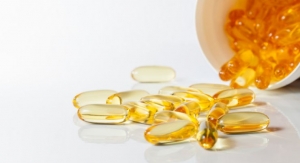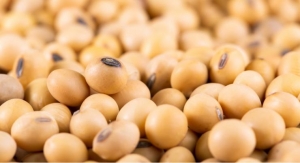Sean Moloughney, Editor03.03.14
Pets are simply part of the family, and parents across the U.S., and the world, are increasingly willing to pay a premium for the health of their loved ones.
U.S. retail sales of pet supplements and nutraceutical treats reached $1.3 billion in 2012, according to market research firm Packaged Facts, Rockville, MD, and competition continues to ramp up.
While sales growth stalled in 2010 because of the recession, due almost entirely to a downturn on the equine supplements side, specialty nutrition and condition-specific pet health formulas have grown in sophistication.
Awareness & Drivers
An August 2012 Packaged Facts consumer survey showed 43% of dog owners and 36% of cat owners purchase some type of specialty nutritional formula pet food or supplemental nutritional product for their pets.
“As in the human nutritional products market, aging is the core market driver, as more pets suffer from age-related conditions such as joint deterioration and cognitive dysfunction,” said David Sprinkle, research director at Packaged Facts.
Also taking a page from human supplements are popular ingredients including glucosamine, omega fatty acids and probiotics, along with trendier ingredients such as bee pollen, green tea and elk velvet antler.
Overall, according to Michael Bush, senior vice president, Ganeden Biotech, Cleveland, OH, the U.S. pet industry—including natural and organic pet food, pet supplements and natural and organic pet supplies—is expected to be $53 billion in 2013, with the animal nutrition industry accounting for about $4 billion of that.
Wellness has greatly impacted products for humans, and just as consumers are paying more attention to what they ingest, they are also increasingly focused on what they offer to their pets. “As pets continue to be humanized, the animal nutrition industry will continue to grow,” said Mr. Bush. “Pet owners are examining the nutrition label on companion animal products, and their purchases are reflecting their own healthier preferences.”
In addition, Americans understand the risks related to poor quality ingredients, especially in pet products, he added. “For years, there was a string of recalls where animals wound up poisoned—and some killed. It is important to pet owners to ensure that their beloved pets are consuming products that are healthy and will benefit their quality of life.”
Erin Hay, national sales representative, Retail Pet Department, Nordic Naturals, Watsonville, CA, agreed that increased understanding has helped boost the market for pet products. “Consumer awareness and behavior around pet nutrition has accelerated measurably in the pet supplement business. As a result, sales growth in this sector is remarkably healthy and on target to continue.”
Many pet parents are meticulous when it comes to what their animals eat, and look for products that deliver specific nutrients, said Steve Siegel, president of NutriWild, LLC, Bellville, NJ. “As pet food and supplement manufacturers keep focusing on specific animals and find what natural ingredients work well for each, consumers will gravitate toward those products in the hopes of giving their pets the best possible diet.”
Most consumers believe what they take for themselves is good for their pets too, according to Ingomar Middelbos, pet market and ingredient manager for Stratum Nutrition, St. Charles, MO. “While there is a large array of ingredients that target top health concerns, the ingredient trends are similar to human supplements. Top categories for dogs are joint health and gut health. You will see glucosamine and chondroitin with new trends leaning toward collagen and other specialty ingredients like eggshell membrane.”
To address gut health, companies are formulating with dietary fibers, prebiotics and probiotics. “A little more unique, or separate from human categories,” said Mr. Middelbos, “the top concern for cats is kidney health. Estimates are that 43% of cats have or will develop kidney or urinary tract issues. Another big concern for cats is metabolic syndrome (weight and or diabetic), but this is primarily controlled by trying to manage food intake.”
Generally speaking, the pet supplement market continues to grow, he added. The pet market is very fragmented but draws a lot of attention. “There are many human-supplement marketing companies that make a foray into the pet supplement space, but I believe the industry could grow faster if some consolidation took place. There are many small companies and this tends to dilute the overall message. Currently, we see some of the big pet food players starting to get serious about supplements. This will help to grow the overall market. In general, I view the outlook for the pet supplement market as positive.”
Omega-3s
In terms of ingredients, omega-3 fatty acids remain a leader in the pet supplement space, according to Nordic Naturals’ Ms. Hay, “as they help support optimal health across a wide variety of functions in cats and dogs, through all of their life stages.”
For example, the most common reasons pets go to the vet are for concerns regarding skin, coat and joint health, she added. “Omega-3s help support optimal pet health in all of those areas. Omega-3s are a great, go-to supplement for so many other aspects of pet health as well, including the immune system, heart and kidney health, eye development and maintenance and even puppy trainability. Emerging research also suggests omega-3 fatty acids help support behavioral health, healthy aging and cognition.”
While functional treats in the pet business can be an important nutritional resource for pets, the most effective way to get results from omega-3 supplementation is through liquid fish oil, or fish oil that is encapsulated in soft gels, Ms. Hay said. “A consistent, daily feeding of a highly purified fish oil in sufficient amounts is a proactive way to achieve optimal pet health.”
Christchurch-based Aroma New Zealand has seen a steady increase in demand for its marine supplements for the pet care industry, including green-lipped mussel powder and shark cartilage powder, according to Ben S. Winters, company director. “Joint care products are becoming a fast-growing segment among pet care brands as, like humans, cats and dogs also suffer from stiff joints and arthritic pain.”
Clinical research has supported the use of green-lipped mussel powder for targeting joint mobility and reducing inflammation in pets suffering from arthritic pain, he said.
However, cheap knock-off grades of green-lipped mussel powder have infiltrated the market and jeopardize consumer confidence, he added. De-fatted green-lipped mussel, a waste-stream product of legitimate manufacturing is being sold as 100% pure green-lipped mussel powder.
“This inferior grade, de-fatted green-lipped mussel has had all the omega-3 fatty acids removed, which is essential for healthy joint health and mobility,” said Mr. Winters. “The product is very light in color and very dusty due to the lipids and omega-3 fraction removed. We are seriously worried this will jeopardize the excellent reputation green-lipped mussel powder has acquired over the last 25 years in the joint care market, as people try to make a quick profit but potentially destroy the market.”
With consumers concerned about the safety profile of the products they feed their pets, it’s important for companies to have their products tested for purity and safety, according to Ms. Hay. “Companies that lead with transparency and offer independent test results—like certificates of analysis—will win the loyalty of their retail partners and customers, while keeping pets safe and healthy for the long term.”
Probiotics
Companion animals tend to have many of the same conditions as humans, such as the need for digestive and immune support, noted Ganeden’s Mr. Bush. “As pet owners continue to apply their own health lessons to their pets, research proving safety of probiotics for humans in the food and beverage industry will be considered the gold standard. Opportunities within the companion animal industry for probiotics reflect trends that are currently being seen in the human nutrition market. Probiotics to support digestive and immune health formulated into treats, food and refrigerated/frozen products are just a few of the exciting opportunities.”
By 2015 the probiotic market is expected to reach $31.1 billion globally, with about $28.1 billion of that from the sale of functional foods and beverages. In addition, consumer awareness continues to grow.
“Currently, about 73% of consumers know what probiotics are and associate them with a health benefit,” Mr. Bush said. “Our functional probiotic ingredient GanedenBC30 (Bacillus coagulans GBI-30, 6086) supports digestive and immune health and its effectiveness is backed by 17 published studies.”
GanedenBC30 is a patented, spore-forming organism that can be found in more than 85 food, beverage and companion animal products around the world. The product can survive harsh manufacturing processes, shelf life and stomach acids, according to the company, in order to make it to the small intestine where it is most effective. GanedenBC30 is also Generally Recognized As Safe (GRAS) for use in foods and beverages in the U.S.
“There have been numerous clinical studies on our specific strain Bacillus coagulans GBI-30, 6086,” said Mr. Bush, “and have found that GanedenBC30 provides both immune and digestive support.”
Formulators should ensure that testing is done to confirm their ingredient survives until the end of the product shelf life, he recommended. “Also, if using a probiotic, it is imperative that the science backing the ingredient is strain-specific; not all probiotic strains are created equal and each specific stain will have different characteristics.”
Format & Function
Products ranging from supplements to treats to foods and beverages seem to be growing at similar rates, according to Ganeden’s Mr. Bush. Ultimately, knowledgeable consumers want food and treats that will ensure the health and longevity of their pets. “We are seeing trends toward clean-label, human-grade ingredients with clinical support for claims. As the pet industry continues to grow we see opportunities for the market for functional products to grow along with it—at a pace as fast, or faster, than the industry in general.”
Supplements are a versatile way of adding essential nutrients to a pet’s diet, noted NutriWild’s Mr. Siegel. “Some pets are very picky about what they eat, and owners find it difficult to change their brand of food accordingly. We have noticed our consumers love using supplements because it will barely alter the taste of their pet’s favorite food.
As more science becomes available, consumers will be more cautious of their pets’ diets, he predicted. “Once the science takes off, consumers will be armed with the information necessary to pick out specific foods for their pets and will exercise that ability much more frequently.”
Trends in human nutrition typically drive those in pet nutrition, according to Stratum’s Mr. Middelbos. “The pet market tends to be just a step behind, as people recognize benefits of specialty health for themselves. All the primary health concerns are overlapping between species.”
One of the most common reasons people take their cat to the vet is because of kidney issues, he said. “We have done quite a bit of work to show that our methionine hydroxy analog (MHA and ALIMET, which are organic acid sources of methionine) shows beneficial effects on kidney health, controlling urinary pH and specific gravity, while reduced nitrogen load on kidneys.”
Regulatory Considerations
Pet food by definition is intended to deliver all daily nutrients but is not designed from a regulatory standpoint to support specialty health needs, said Mr. Middelbos. “This is a main driving force for creating a market for pet supplements. Just like with ingredients, delivery format trends tend to follow the human supplement market, and are moving away from standard pills and powders. We see an increasing trend for more innovative deliveries such as treats, chews and snacks for our pets.”
There is a lack of formal regulation for the pet health/supplement market, according to Juliana Erickson, senior marketing manager, InterHealth Nutraceuticals, Benecia, CA. However, sales of pet supplements are successful and growing.
“Thankfully, The National Animal Supplement Council (NASC) is working with the FDA and other regulatory officials to formulate pet supplement regulations,” she said. “Currently, products can be marketed either as a ‘food’ or a ‘drug’ with no official supplement category in place yet. NASC has taken a leadership role in resolving this issue with the FDA and trying to create a regulatory environment that will allow manufacturers to sell supplements for animals. The FDA is working with NASC in part out of demand from pet owners for high-quality pet supplements.”
The Association of American Feed Control Officials (AAFCO) is the pet food regulating body, noted Mr. Middelbos. “If you have questions about where your ingredients fit into the companion animal market, look up the NASC charter (www.nasc.cc) for regulatory options of non-approved food ingredients. FDA considers pet supplements as unapproved drugs of low regulatory priority. This is where NASC resides as a self-regulating body monitoring the ‘gray area’ between AAFCO (food) and FDA (drugs) where pet supplements reside.”
Joint Health
Ingredients that target the aging process will see continued success, according to InterHealth’s Ms. Erickson. “Ingredients for healthy joints will continue to be a hot area of supplementation, primarily because of the high number of animals, mainly dogs and horses, that need joint health support.”
The company’s UC-II consists of undenatured type II collagen for joint health support and meets the AAFCO definition for an approved ingredient. The efficacy and safety of UC-II is supported by studies conducted in dogs and horses, as well as in humans.
For example, UC-II’s effectiveness was determined in a double-blind, placebo-controlled study using ground force plate analysis, a benchmark for the objective quantitative assessment of joint pain and discomfort in osteoarthritic dogs. “Ground force plate analysis is determined by measuring peak force and impulse area,” Ms. Erickson explained. “Peak force measures the amount of weight the dog is bearing on a given limb and impulse area measures the amount of force applied by the limb onto the plate. A daily dose of 40 mg of UC-II significantly increased peak force by 18% and impulse area by 45% after 120 days. Subjective parameters measured after limb manipulation and exercise also demonstrated a significant increase in joint comfort.”
In another study, osteoarthritic horses received placebo, 320 mg of UC-II, 480 mg of UC-II, 640 mg of UC-II or 5,400 mg of glucosamine + 1,800 mg of chondroitin. Horses receiving 320, 480 or 640 mg of UC-II exhibited significant reduction in arthritic pain. UC-II at 480 or 640 mg doses provided similar effects, and therefore, 480 mg was considered optimal. There was an 88% decrease in overall pain and a 78% decrease in pain upon limb manipulation in the group receiving 40 mg of UC-II.
According to the Arthritis Foundation, approximately 20% of the U.S. dog population (78.2 million) suffers from arthritis. Crominex 3+, a complex of trivalent chromium, Phyllanthus emblica extract (amla) and purified Shilajit from Natreon, New Brunswick, NJ, was administered to 11 dogs in a randomized, double-blinded, placebo-controlled study published recently in the Journal of Veterinary Science & Animal Husbandry. Research indicated that Crominex 3+ significantly reduced arthritic pain over a 5-month period.
NutriWild’s Mr. Siegel also said some of the most popular ingredients on the market are those that deliver joint relief and strengthening for pets. “With dogs, cats and horses, pet owners are concerned about their long-term joint health. As these pets get older, it becomes harder for them to do everyday tasks. This is especially worrisome in horses. It is why we notice specialized joint formulas, like NutriWild’s Horse Joint Formula made with natural yucca schidigera, are doing so well.”
Moving forward, the pet supplement business will continue its growth cycle, said Nordic Naturals’ Ms. Hay, “with education being essential to maintain positioning in the eager pet supplement space. Companies will also find value in offering comprehensive online training, because effective training equals sales.”
Sean Moloughney is the editor of Nutraceuticals World. His e-mail address is smoloughney@rodmanmedia.com
U.S. retail sales of pet supplements and nutraceutical treats reached $1.3 billion in 2012, according to market research firm Packaged Facts, Rockville, MD, and competition continues to ramp up.
While sales growth stalled in 2010 because of the recession, due almost entirely to a downturn on the equine supplements side, specialty nutrition and condition-specific pet health formulas have grown in sophistication.
Awareness & Drivers
An August 2012 Packaged Facts consumer survey showed 43% of dog owners and 36% of cat owners purchase some type of specialty nutritional formula pet food or supplemental nutritional product for their pets.
“As in the human nutritional products market, aging is the core market driver, as more pets suffer from age-related conditions such as joint deterioration and cognitive dysfunction,” said David Sprinkle, research director at Packaged Facts.
Also taking a page from human supplements are popular ingredients including glucosamine, omega fatty acids and probiotics, along with trendier ingredients such as bee pollen, green tea and elk velvet antler.
Overall, according to Michael Bush, senior vice president, Ganeden Biotech, Cleveland, OH, the U.S. pet industry—including natural and organic pet food, pet supplements and natural and organic pet supplies—is expected to be $53 billion in 2013, with the animal nutrition industry accounting for about $4 billion of that.
Wellness has greatly impacted products for humans, and just as consumers are paying more attention to what they ingest, they are also increasingly focused on what they offer to their pets. “As pets continue to be humanized, the animal nutrition industry will continue to grow,” said Mr. Bush. “Pet owners are examining the nutrition label on companion animal products, and their purchases are reflecting their own healthier preferences.”
In addition, Americans understand the risks related to poor quality ingredients, especially in pet products, he added. “For years, there was a string of recalls where animals wound up poisoned—and some killed. It is important to pet owners to ensure that their beloved pets are consuming products that are healthy and will benefit their quality of life.”
Erin Hay, national sales representative, Retail Pet Department, Nordic Naturals, Watsonville, CA, agreed that increased understanding has helped boost the market for pet products. “Consumer awareness and behavior around pet nutrition has accelerated measurably in the pet supplement business. As a result, sales growth in this sector is remarkably healthy and on target to continue.”
Many pet parents are meticulous when it comes to what their animals eat, and look for products that deliver specific nutrients, said Steve Siegel, president of NutriWild, LLC, Bellville, NJ. “As pet food and supplement manufacturers keep focusing on specific animals and find what natural ingredients work well for each, consumers will gravitate toward those products in the hopes of giving their pets the best possible diet.”
Most consumers believe what they take for themselves is good for their pets too, according to Ingomar Middelbos, pet market and ingredient manager for Stratum Nutrition, St. Charles, MO. “While there is a large array of ingredients that target top health concerns, the ingredient trends are similar to human supplements. Top categories for dogs are joint health and gut health. You will see glucosamine and chondroitin with new trends leaning toward collagen and other specialty ingredients like eggshell membrane.”
To address gut health, companies are formulating with dietary fibers, prebiotics and probiotics. “A little more unique, or separate from human categories,” said Mr. Middelbos, “the top concern for cats is kidney health. Estimates are that 43% of cats have or will develop kidney or urinary tract issues. Another big concern for cats is metabolic syndrome (weight and or diabetic), but this is primarily controlled by trying to manage food intake.”
Generally speaking, the pet supplement market continues to grow, he added. The pet market is very fragmented but draws a lot of attention. “There are many human-supplement marketing companies that make a foray into the pet supplement space, but I believe the industry could grow faster if some consolidation took place. There are many small companies and this tends to dilute the overall message. Currently, we see some of the big pet food players starting to get serious about supplements. This will help to grow the overall market. In general, I view the outlook for the pet supplement market as positive.”
Omega-3s
In terms of ingredients, omega-3 fatty acids remain a leader in the pet supplement space, according to Nordic Naturals’ Ms. Hay, “as they help support optimal health across a wide variety of functions in cats and dogs, through all of their life stages.”
For example, the most common reasons pets go to the vet are for concerns regarding skin, coat and joint health, she added. “Omega-3s help support optimal pet health in all of those areas. Omega-3s are a great, go-to supplement for so many other aspects of pet health as well, including the immune system, heart and kidney health, eye development and maintenance and even puppy trainability. Emerging research also suggests omega-3 fatty acids help support behavioral health, healthy aging and cognition.”
While functional treats in the pet business can be an important nutritional resource for pets, the most effective way to get results from omega-3 supplementation is through liquid fish oil, or fish oil that is encapsulated in soft gels, Ms. Hay said. “A consistent, daily feeding of a highly purified fish oil in sufficient amounts is a proactive way to achieve optimal pet health.”
Christchurch-based Aroma New Zealand has seen a steady increase in demand for its marine supplements for the pet care industry, including green-lipped mussel powder and shark cartilage powder, according to Ben S. Winters, company director. “Joint care products are becoming a fast-growing segment among pet care brands as, like humans, cats and dogs also suffer from stiff joints and arthritic pain.”
Clinical research has supported the use of green-lipped mussel powder for targeting joint mobility and reducing inflammation in pets suffering from arthritic pain, he said.
However, cheap knock-off grades of green-lipped mussel powder have infiltrated the market and jeopardize consumer confidence, he added. De-fatted green-lipped mussel, a waste-stream product of legitimate manufacturing is being sold as 100% pure green-lipped mussel powder.
“This inferior grade, de-fatted green-lipped mussel has had all the omega-3 fatty acids removed, which is essential for healthy joint health and mobility,” said Mr. Winters. “The product is very light in color and very dusty due to the lipids and omega-3 fraction removed. We are seriously worried this will jeopardize the excellent reputation green-lipped mussel powder has acquired over the last 25 years in the joint care market, as people try to make a quick profit but potentially destroy the market.”
With consumers concerned about the safety profile of the products they feed their pets, it’s important for companies to have their products tested for purity and safety, according to Ms. Hay. “Companies that lead with transparency and offer independent test results—like certificates of analysis—will win the loyalty of their retail partners and customers, while keeping pets safe and healthy for the long term.”
Probiotics
Companion animals tend to have many of the same conditions as humans, such as the need for digestive and immune support, noted Ganeden’s Mr. Bush. “As pet owners continue to apply their own health lessons to their pets, research proving safety of probiotics for humans in the food and beverage industry will be considered the gold standard. Opportunities within the companion animal industry for probiotics reflect trends that are currently being seen in the human nutrition market. Probiotics to support digestive and immune health formulated into treats, food and refrigerated/frozen products are just a few of the exciting opportunities.”
By 2015 the probiotic market is expected to reach $31.1 billion globally, with about $28.1 billion of that from the sale of functional foods and beverages. In addition, consumer awareness continues to grow.
“Currently, about 73% of consumers know what probiotics are and associate them with a health benefit,” Mr. Bush said. “Our functional probiotic ingredient GanedenBC30 (Bacillus coagulans GBI-30, 6086) supports digestive and immune health and its effectiveness is backed by 17 published studies.”
GanedenBC30 is a patented, spore-forming organism that can be found in more than 85 food, beverage and companion animal products around the world. The product can survive harsh manufacturing processes, shelf life and stomach acids, according to the company, in order to make it to the small intestine where it is most effective. GanedenBC30 is also Generally Recognized As Safe (GRAS) for use in foods and beverages in the U.S.
“There have been numerous clinical studies on our specific strain Bacillus coagulans GBI-30, 6086,” said Mr. Bush, “and have found that GanedenBC30 provides both immune and digestive support.”
Formulators should ensure that testing is done to confirm their ingredient survives until the end of the product shelf life, he recommended. “Also, if using a probiotic, it is imperative that the science backing the ingredient is strain-specific; not all probiotic strains are created equal and each specific stain will have different characteristics.”
Format & Function
Products ranging from supplements to treats to foods and beverages seem to be growing at similar rates, according to Ganeden’s Mr. Bush. Ultimately, knowledgeable consumers want food and treats that will ensure the health and longevity of their pets. “We are seeing trends toward clean-label, human-grade ingredients with clinical support for claims. As the pet industry continues to grow we see opportunities for the market for functional products to grow along with it—at a pace as fast, or faster, than the industry in general.”
Supplements are a versatile way of adding essential nutrients to a pet’s diet, noted NutriWild’s Mr. Siegel. “Some pets are very picky about what they eat, and owners find it difficult to change their brand of food accordingly. We have noticed our consumers love using supplements because it will barely alter the taste of their pet’s favorite food.
As more science becomes available, consumers will be more cautious of their pets’ diets, he predicted. “Once the science takes off, consumers will be armed with the information necessary to pick out specific foods for their pets and will exercise that ability much more frequently.”
Trends in human nutrition typically drive those in pet nutrition, according to Stratum’s Mr. Middelbos. “The pet market tends to be just a step behind, as people recognize benefits of specialty health for themselves. All the primary health concerns are overlapping between species.”
One of the most common reasons people take their cat to the vet is because of kidney issues, he said. “We have done quite a bit of work to show that our methionine hydroxy analog (MHA and ALIMET, which are organic acid sources of methionine) shows beneficial effects on kidney health, controlling urinary pH and specific gravity, while reduced nitrogen load on kidneys.”
Regulatory Considerations
Pet food by definition is intended to deliver all daily nutrients but is not designed from a regulatory standpoint to support specialty health needs, said Mr. Middelbos. “This is a main driving force for creating a market for pet supplements. Just like with ingredients, delivery format trends tend to follow the human supplement market, and are moving away from standard pills and powders. We see an increasing trend for more innovative deliveries such as treats, chews and snacks for our pets.”
There is a lack of formal regulation for the pet health/supplement market, according to Juliana Erickson, senior marketing manager, InterHealth Nutraceuticals, Benecia, CA. However, sales of pet supplements are successful and growing.
“Thankfully, The National Animal Supplement Council (NASC) is working with the FDA and other regulatory officials to formulate pet supplement regulations,” she said. “Currently, products can be marketed either as a ‘food’ or a ‘drug’ with no official supplement category in place yet. NASC has taken a leadership role in resolving this issue with the FDA and trying to create a regulatory environment that will allow manufacturers to sell supplements for animals. The FDA is working with NASC in part out of demand from pet owners for high-quality pet supplements.”
The Association of American Feed Control Officials (AAFCO) is the pet food regulating body, noted Mr. Middelbos. “If you have questions about where your ingredients fit into the companion animal market, look up the NASC charter (www.nasc.cc) for regulatory options of non-approved food ingredients. FDA considers pet supplements as unapproved drugs of low regulatory priority. This is where NASC resides as a self-regulating body monitoring the ‘gray area’ between AAFCO (food) and FDA (drugs) where pet supplements reside.”
Joint Health
Ingredients that target the aging process will see continued success, according to InterHealth’s Ms. Erickson. “Ingredients for healthy joints will continue to be a hot area of supplementation, primarily because of the high number of animals, mainly dogs and horses, that need joint health support.”
The company’s UC-II consists of undenatured type II collagen for joint health support and meets the AAFCO definition for an approved ingredient. The efficacy and safety of UC-II is supported by studies conducted in dogs and horses, as well as in humans.
For example, UC-II’s effectiveness was determined in a double-blind, placebo-controlled study using ground force plate analysis, a benchmark for the objective quantitative assessment of joint pain and discomfort in osteoarthritic dogs. “Ground force plate analysis is determined by measuring peak force and impulse area,” Ms. Erickson explained. “Peak force measures the amount of weight the dog is bearing on a given limb and impulse area measures the amount of force applied by the limb onto the plate. A daily dose of 40 mg of UC-II significantly increased peak force by 18% and impulse area by 45% after 120 days. Subjective parameters measured after limb manipulation and exercise also demonstrated a significant increase in joint comfort.”
In another study, osteoarthritic horses received placebo, 320 mg of UC-II, 480 mg of UC-II, 640 mg of UC-II or 5,400 mg of glucosamine + 1,800 mg of chondroitin. Horses receiving 320, 480 or 640 mg of UC-II exhibited significant reduction in arthritic pain. UC-II at 480 or 640 mg doses provided similar effects, and therefore, 480 mg was considered optimal. There was an 88% decrease in overall pain and a 78% decrease in pain upon limb manipulation in the group receiving 40 mg of UC-II.
According to the Arthritis Foundation, approximately 20% of the U.S. dog population (78.2 million) suffers from arthritis. Crominex 3+, a complex of trivalent chromium, Phyllanthus emblica extract (amla) and purified Shilajit from Natreon, New Brunswick, NJ, was administered to 11 dogs in a randomized, double-blinded, placebo-controlled study published recently in the Journal of Veterinary Science & Animal Husbandry. Research indicated that Crominex 3+ significantly reduced arthritic pain over a 5-month period.
NutriWild’s Mr. Siegel also said some of the most popular ingredients on the market are those that deliver joint relief and strengthening for pets. “With dogs, cats and horses, pet owners are concerned about their long-term joint health. As these pets get older, it becomes harder for them to do everyday tasks. This is especially worrisome in horses. It is why we notice specialized joint formulas, like NutriWild’s Horse Joint Formula made with natural yucca schidigera, are doing so well.”
Moving forward, the pet supplement business will continue its growth cycle, said Nordic Naturals’ Ms. Hay, “with education being essential to maintain positioning in the eager pet supplement space. Companies will also find value in offering comprehensive online training, because effective training equals sales.”
Sean Moloughney is the editor of Nutraceuticals World. His e-mail address is smoloughney@rodmanmedia.com



























